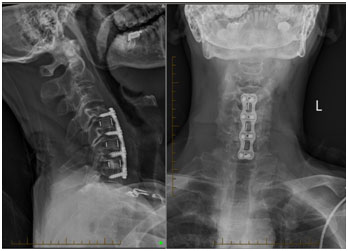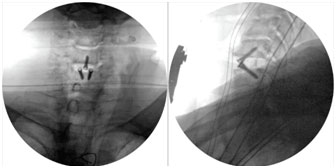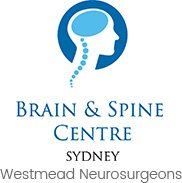Anterior Cervical Discectomy and Fusion (ACDF)
Historically, the anterior cervical discectomy with fusion (ACDF) approach was credited to Smith and Robinson, and Cloward in 1958. The surgeon approaches the cervical spine through a small skin-crease incision in the front of the neck. ACDF has been the gold standard in the surgical treatment of numerous conditions, including disc herniation and/or bony compression, traumatic and tumour related compression or instability, and cervical deformity.
Procedure
The surgery is performed general anaesthesia. You will lie on the operating table faced up, and draped in a sterile fashion. A 4-5cm horizontal skin-crease incision is made either on the left or right of midline. A very thin muscle (platysma) is incised, and the rest of the operation does not require any muscle dissection. There is an avascular gap that is identified to gain access to the anterior surface of the cervical spine. An Xray is performed on the operating table to identify the correct disc space. The disc is completely removed and the bony surface is meticulously prepared to achieve unrestricted contact with the fusion device and the bone graft. At the spinal canal where the spinal cord and exiting nerves are, any bone spurs (osteophytes) and disc fragments must be removed to decompress the important structures.
A wedge fusion device (cage) made of titanium or PEEK™ filled with man-made bone or autograft is inserted into the disc space to restore the height of the disc space as well as the natural curve of the spine. A titanium plate is screwed into the anterior surface of the spine, achieving immediate strength and stability. Some surgeons will use cages that allow direct screw fixation to the bone.


Risks or Complications
All surgeries carry risk and it is important to understand the risks of the procedure in order to make an informed decision to go ahead with the surgery. In addition to the anaesthetic complications, spinal surgery is associated with some potential risks but not limited to:
- Failure of bone healing
- Implant failure/migration
- Inaccurate positioning of implants
- Transient/Long term Nerve injury
- Transient/Long term Spinal cord injury
- Transient/Long term Husky/Hoarse voice
- Transient/Long term swallowing difficulty
- Persistent nerve pain, numbness, tingling, burning, aching
- Persistent neck pain, headaches, shoulder pain, scapular (shoulder blade) and interscapular (between shoulder blade) pain
- Infection
- Spinal fluid leak (dural tear)
- Postoperative hematoma (bleeding)
- Numbness above the incision site
- Horner’s Syndrome (droopy eye lid, constricted pupil and altered facial sweating)
- Slight reduction in motion of cervical spine
- Risk of adjacent (neighbouring) disc degeneration
Benefits
- Less muscle dissection
- Less painful than posterior approaches
- Less bleeding
- Shorter recovery period
- Compressive lesion is directly removed
- Able to restore disc height
- Better correction of any deformity/curvature of the cervical spine




